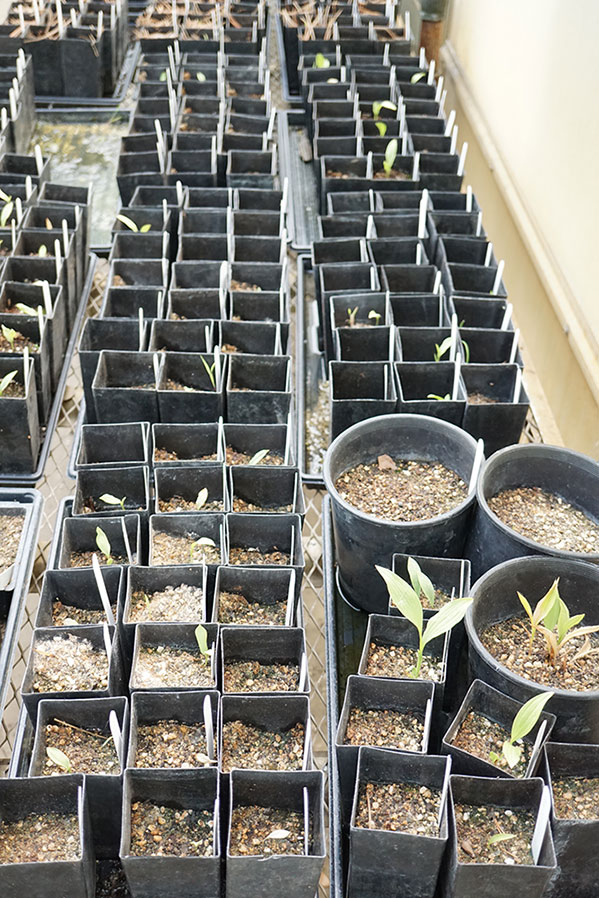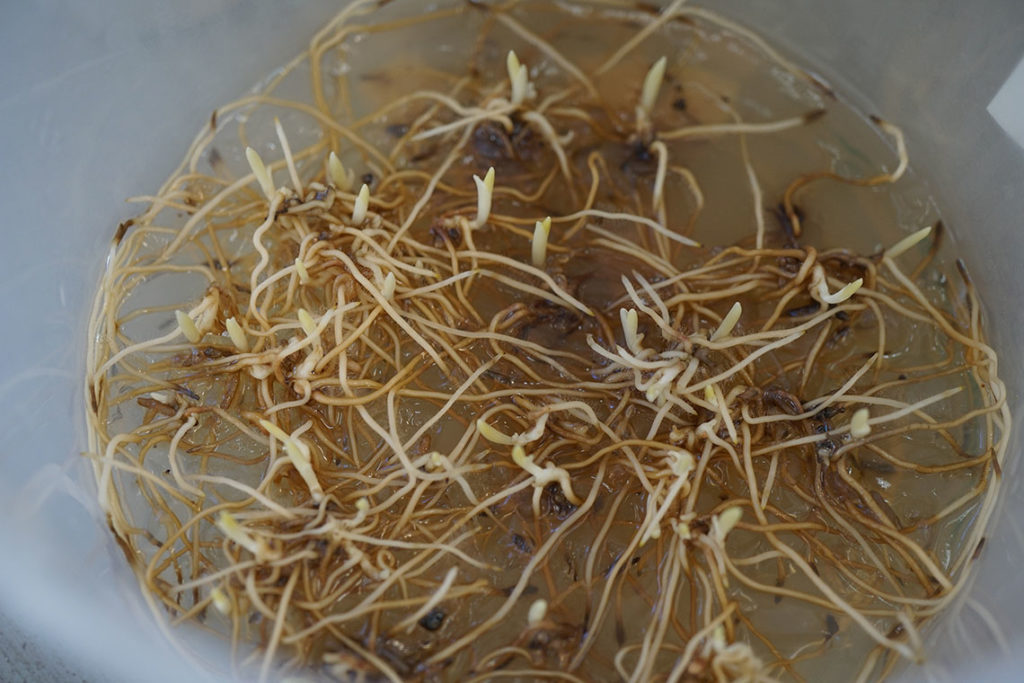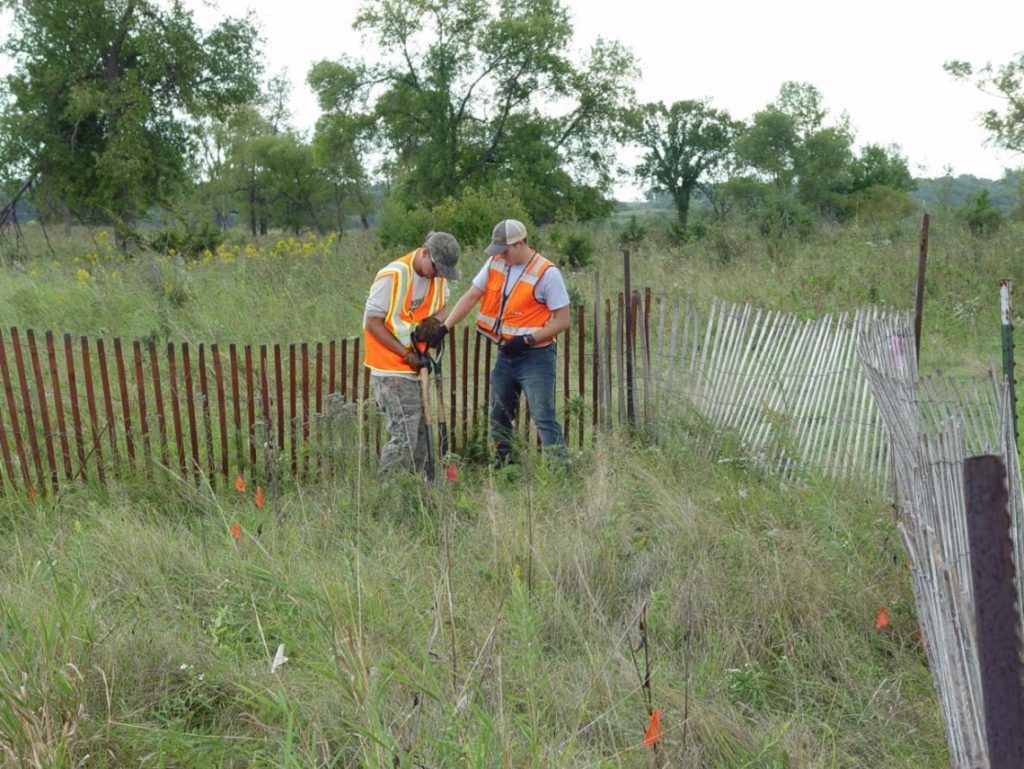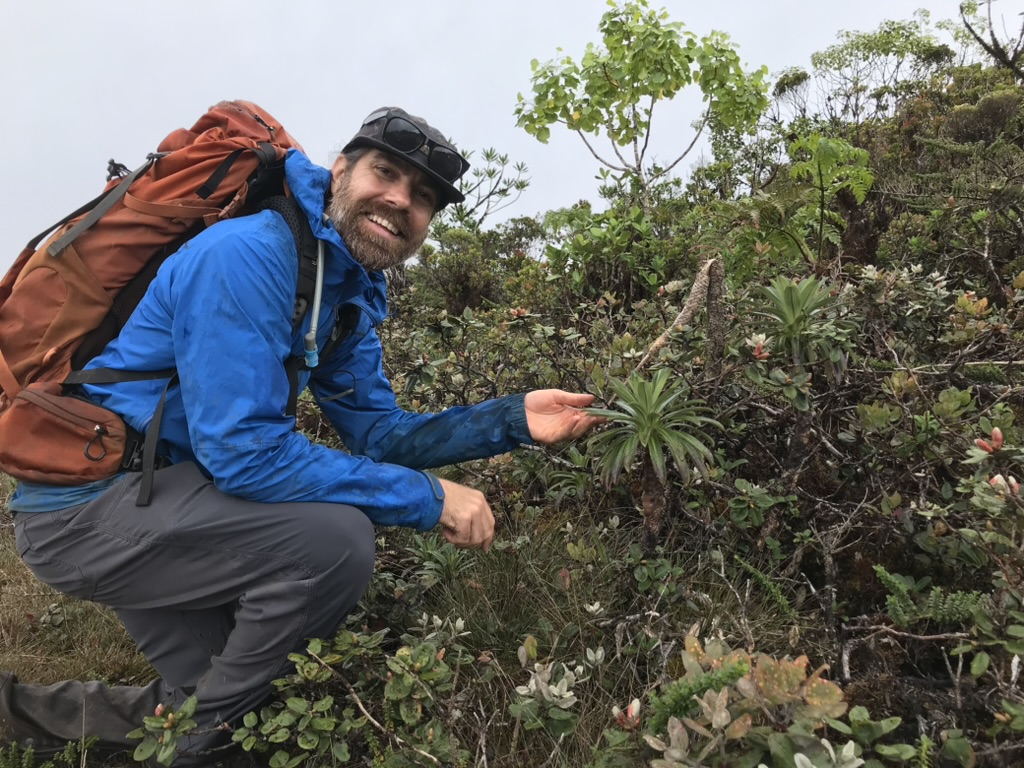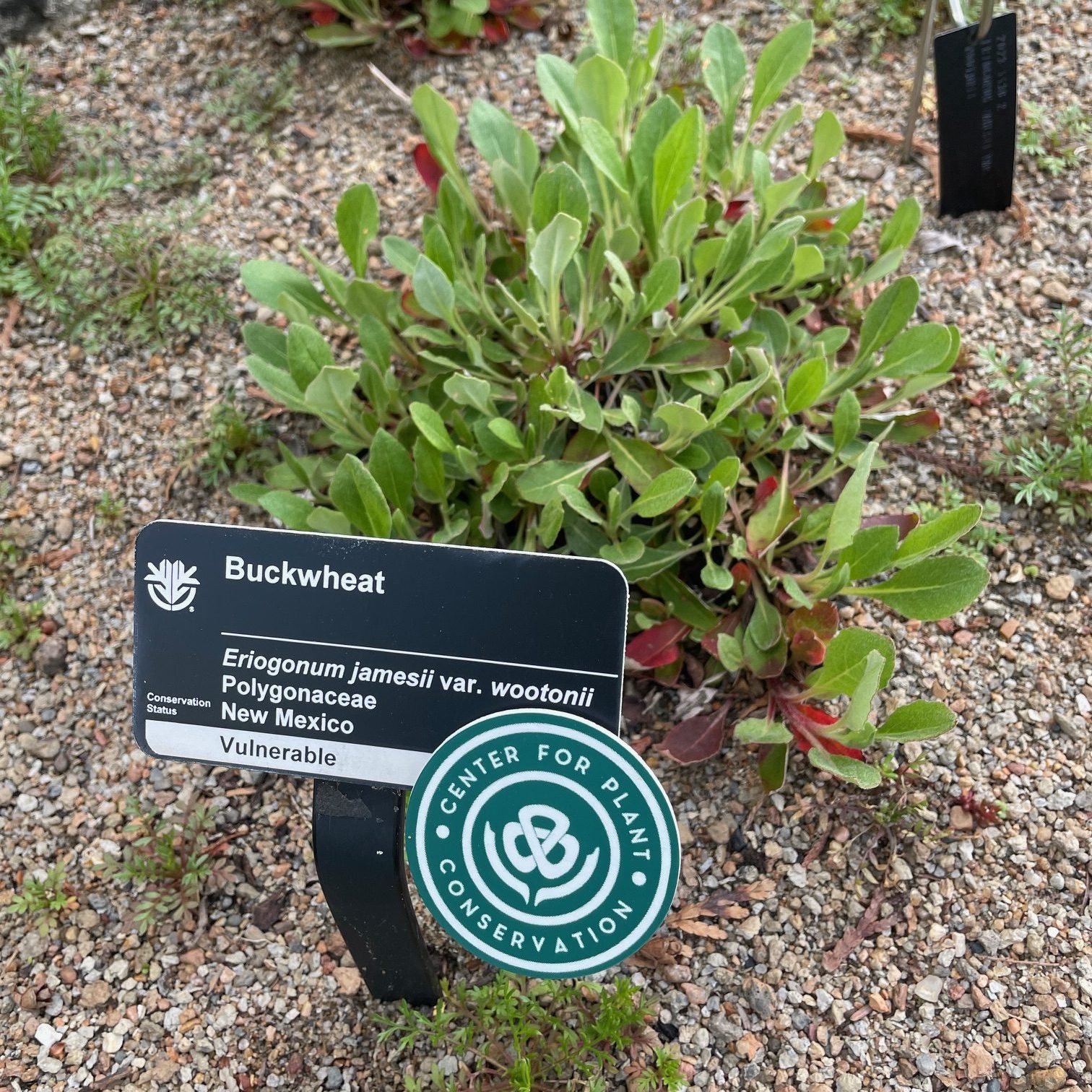Save Plants: June 2018 Newsletter
CENTER FOR PLANT CONSERVATION
June 2018 Newsletter
North America is a wonderfully diverse continent more often than not known for its shimmering beaches and epic mountains. But through the great expanse of this continent lies the remnants of one of the most remarkable habitats on Earth — the North American prairie. Here, the plants are adapted to modest rain, cool winters, and seemingly ever-present wind. Although outwardly sparse, with few trees and little else to differentiate it, the soil here is fertile and the grasses, wildflowers, and diversity of wildlife belie this seemingly barren landscape.
Sadly, the prairies of the United States are some of the rarest ecosystems on Earth. Due to topography and soil conditions, prairies make for excellent farming as well as urban development. Less than 1 percent of intact native habitat remains as a result, with many species of prairie plants now facing extinction. This month’s issue of SavePlants features the efforts of several Center for Plant Conservation (CPC) Participating Institutions focused on saving rare prairie plants. Read on to learn about these good works and to understand more about the native diversity that characterizes the heartland of North America.
The Morton Arboretum
Experimental Prairie
Ecological restoration is a critical component of conservation. Unfortunately, restored sites often fall short of common restoration goals such as maintenance of biodiversity over time, increased ecosystem function, and resistance to invasion by exotic weeds. The goal of this project is to test whether considering phylogenetic diversity, a measure of biodiversity that takes into account evolutionary history, can advance the ability to restore diverse, highly functional, resilient communities. In this project, they are installing two experimental prairies, one at The Morton Arboretum and one at Prairie Moon Nursery (Winona, Minn.); analyzing existing restorations as well as remnant prairies; and collaborating with colleagues at Chicago Botanic Garden, Northern Illinois University, and the University of Minnesota to investigate the effects of planted species diversity on restoration outcomes and function of restorations.
As part of a five-year National Science Foundation grant, The Morton Arboretum Plant Systematics Lab designed and installed an experimental prairie in 2016 measuring about a 3/4-acre. The prairie is designed to investigate the effects of phylogenetic, or evolutionary, and functional diversity of plants installed in prairie restorations on the restoration outcomes. There are 127 species included in the experiment, planted in 144 treatment plots and 254 monocultures.
Outcomes investigated include:
- Productivity (estimated by measuring biomass and spectral vegetation indices)
- Maintenance of biodiversity
- Resilience to interannual drought
- Resistance to invasion
- Effects on soil microbial diversity
The experiment endeavors to quantify the degree that the diversity and identity of what is planted in restorations can increase the probability of restoration success as well as decrease maintenance costs over time. The experiment is currently being utilized by researchers at The Morton Arboretum, Chicago Botanic Gardens, University of Minnesota, and Northern Illinois University.
There is also collaboration between PI Andrew Hipp and colleagues at Downers Grove North High School in Illinois where approximately 100 to 120 Advanced Placement biology students gain experience in prairie ecology and experimental design.
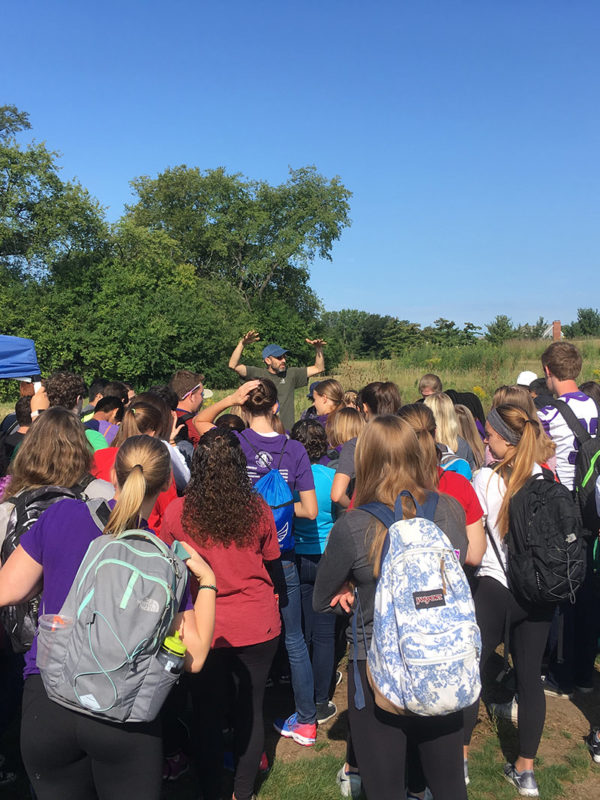
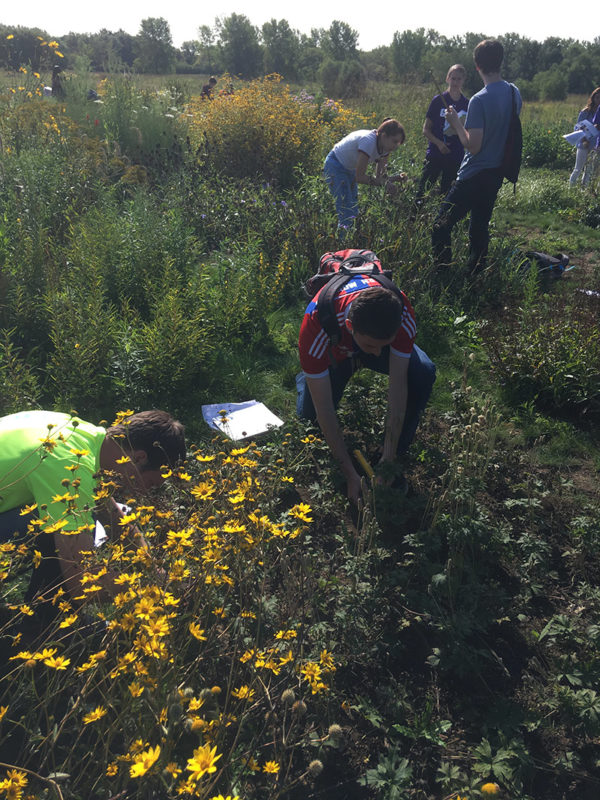
High School students gathering trait data in the experiment. The Morton Arboretum Herbarium and Systematics Laboratory have been collaborating with the AP Biology program at nearby Downers Grove North High School for approximately 6 years. In the past three years, our work with them has been focused on our prairie experiment and beginning in 2017, the students’ curriculum involves a field trip to the prairie to gather data on plant traits, by species. Students then work with the PI on this experiment, Dr. Andrew Hipp, and a postdoc on the project, Dr. Rebecca Barak, during a semester-long inquiry into prairie ecology and the practice of conducting ecological research. The semester culminates in group projects in which the students generate and test hypotheses, then present their work in a poster session. Through this work, more than 650 students have gained training in plant biodiversity science, and each of the past three years, two of these students have been hired to work in the Systematics Laboratory during the summer as research interns.
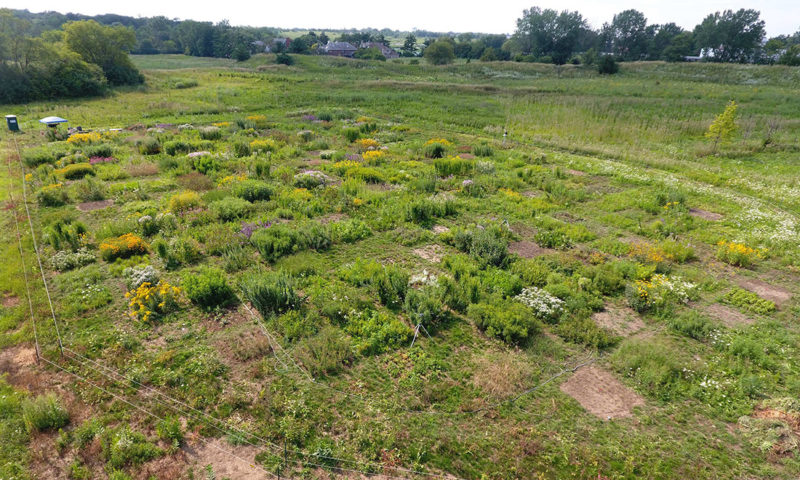
University of Minnesota Landscape Arboretum (MLA)
The University of Minnesota Landscape Arboretum safeguards nine species in the CPC National Collection. Three of these species, Cypripedium candidum, Platanthera praeclara, and Besseya bullii, are prairie species. The University of Minnesota Landscape Arboretum has had great success growing the Cypripedium, an orchid, and will be starting a population at the Arboretum as an experiment to try and introduce this wet meadow orchid to a reconstructed landscape. They are also in the process of producing hundreds of seedlings of this species for use in a restoration project in eastern Wisconsin.
For the Platanthera, another orchid, the biggest challenges are figuring out how to best bank the seed, how to propagate large amounts of the plant, and how to establish seedlings in natural or reconstructed landscapes. The Arboretum is working on these challenges.
For the Besseya, they are nearing completion of acceptable genetic/geographic coverage of the species for Minnesota. Currently, they are beginning to turn their attention to getting seed from other states in its range. They appear to have overcome an apparent hump in germination testing for this species and have started to offer seedlings to donor locations for population augmentation (no takers yet, but folks are at least talking about the possibilities which is, in actuality, what they really want at this point). They will be establishing their own population of Besseya at the arboretum this fall, once everything has gone dormant, as well as creating safeguard beds for several of the donor populations.
For all of these species, as they are established in their prairie (or prairie display beds), the next steps are to develop interpretations for visitors to emphasize the arboretum’s work on preserving some of the prairie gems in the state as first real opportunities to present the public with results of some of its conservation work.
The Arnoglossum plantagineum translocation project: this is not a CPC species, but it is a state listed species (the plant is rare in Minnesota because it is on the edge of its range). It is a wet/mesic prairie species that may be able to tolerate drier sites. The largest population in Minnesota was slated to be destroyed as part of a permit for a fracking sand mine granted in late 2014/early 2015. Working with the state Department of Natural Resources, this has been the first deliberate translocation project the state has really endorsed/attempted.
Over the course of a few seasons, they have collected seed and dug up plants that were either transplanted to protected donor sites immediately or brought back to the arboretum for managed care. A population was started at the arboretum’s prairie, which is thriving, and they’ll be supplementing it to try and establish a self-sustaining population. They will also be creating a safeguard bed to be used for seed amplification and production if needed in the future.
The two other protected sites have had varying degrees of survivorship, which appears highly dependent on how quickly pocket gophers find the root systems of the plants. Recently, a new population with what seems to be a single individual was discovered at one of the protected sites and they are looking at trying to supplement and amplify that population while maintaining its genetic integrity as much as possible, which is an interesting problem. Finally using the successes and failures from the three extant populations, they have identified a fourth site to accept the remains of the salvaged plants. This has been a learning process for all involved and may be turning into the first step towards creating a state-wide conservation network/system similar to the Georgia Plant Conservation Alliance or the New England Plant Conservation Program.
Lauritzen Botanic Gardens
Lauritzen Gardens has focused on the Central Grassland of North America and has been engaged in prairie work on several fronts. Three current projects are: Endemic Plants of the Central Grassland of North America, Sandsage Prairie Initiative, and Blowout Penstemon Seed Banking Project.
Endemic Plants of the Central Grassland of North America
Knowledge of the endemic plants of a region is an important element in understanding the biological diversity of that region and in prioritizing areas for conservation action. Research by Lauritzen Gardens has identified 382 plants with geographic distributions that are mostly limited to the Central Grassland . Of these endemic and uniquely grassland plants, 124 or 33 percent are at risk of extinction. A paper documenting the distribution, ecology, and conservation status of these plants was published in the Journal of the Botanical Research Institute of Texas in 2017. You can read the article here.
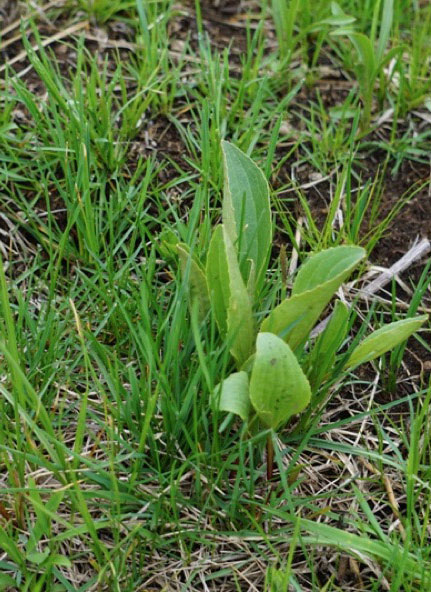
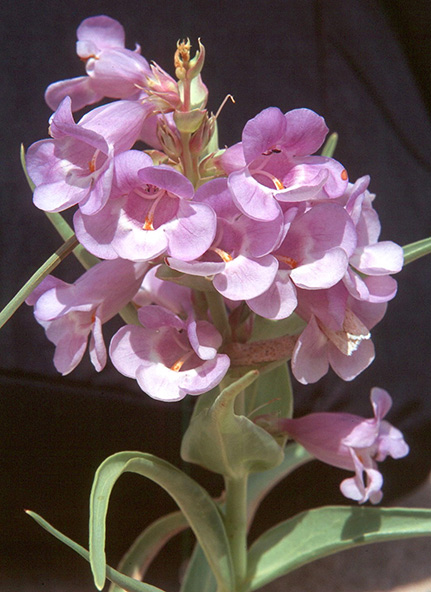
Sandsage Prairie Initiative
Sandsage prairie is a steppe community in which the shrub sand sagebrush (Artemesia filifolia) is a dominant element. This community type is found in sandy habitat throughout a large part of the western Great Plains. Sandsage prairie is important for many species of grassland birds but is declining in both quality and quantity, and it has been identified as a conservation priority in the state wildlife action plans of Nebraska, Colorado, and Kansas. Lauritzen Gardens conducted a rare-plant survey of Nebraska sandsage prairie in 2017 and is currently engaged in a range-wide ecological survey of that will, hopefully, yield insights that inform conservation management practices. This research is being supported by a generous donation from the Loveland Garden Club (Garden Club of America member) of Omaha, Nebraska.
Blowout Penstemon Seed Banking Project
The blowout penstemon (Penstemon haydenii) is one of the rarest and most endangered plant species in the United States. It is currently known from 10 naturally-occurring populations in the Nebraska Sandhills and from three populations on sand dunes in the Ferris Dunes of south-central Wyoming. Lauritzen Gardens is working with a team of federal and state botanists to conduct a systematic, range-wide seed banking effort for this species. The effort will involve collecting seed samples from as many extant populations as is possible and prudent.
Missouri Botanical Garden
Missouri Botanical Garden is conducting a research project with the Center for Plant Conservation (CPC) species Mead’s milkweed (Asclepias meadii). This species is endemic to tallgrass prairies and listed as federally threatened on the Endangered Species Act. It is a long-lived perennial plant that occupies mature tallgrass prairie habitats in Kansas, Missouri, Iowa, and Illinois. The goal of the project is to understand whether a genetic bottleneck or low genetic variation is limiting reproduction and the overall viability of the species. Genetic data from this study will help inform ongoing restoration and conservation efforts with this species.
The initial decline of the species was due to habitat loss and adverse land management practices. Low fecundity was a factor in preventing recovery of the species. Some populations produced only a few or no seed pods each year. This seemed to vary among populations — some populations did successfully produce seed pods each year, but others produced none. It is unknown whether populations that do not produce seed indeed have lower genetic diversity and higher relatedness than those successfully producing seed, or whether other unknown factors are affecting fecundity in Mead’s milkweed.
The Shaw Nature Reserve has created over 300 acres of prairie plantings: “The Reserve’s prairie plantings (on former farmland or pasture) represent this once-vast, nearly treeless ecosystem, of which less than 1% of the original remains intact . . . Prairie plants are introduced by direct seeding, and less often, greenhouse-grown transplants. The tall grasses, reaching as high as 10 feet, remind us of the ocean as they wave in a gentle breeze. Over 70 species of wildflowers bloom in the prairie beginning in May and ending in October. The leaves, stalks, and blossoms of these wildflowers present a fascinating variety of colors, shapes, and textures. Some species, such as goldenrods and sunflowers, spread across the prairie in bright yellow masses in late summer, while to discover other species may require more careful searching among the grasses.” Note: Asclepias meadii does not occur naturally at Shaw Nature Reserve, and it has not been successful at establishing an introduced population on the premises. Learn more about the Shaw Nature Reserve here.
In North America, you can find tallgrass prairie, mixed-grass prairie, or shortgrass prairie.
- Tallgrass: Its main feature is tall grasses, such as indiangrass (Sorghastrum nutans), big bluestem (Andropogon gerardi), little bluestem (Schizachyrium scoparium), and switchgrass (Panicum virgatum).
- Mixed-grass: A transition area between tallgrass prairies and shortgrass prairies.
- Shortgrass: The two most dominant grasses are blue grama (Bouteloua gracilis) and buffalograss (Bouteloua dactyloides); the two less dominant grasses are greasegrass (Tridens flavus) and sideoats grama (Bouteloua curtipendula).
There are three types of prairies: wet, mesic, and dry.
- Wet prairies have moist soil. Water drainage is usually poor. As a result, bogs and fens may form. The soil is excellent farming soil.
- Mesic prairies have good soil and good drainage. They are endangered due to converting to agricultural use.
- Dry prairies can have wet to very dry soil during growing season. They have good drainage and can be found on uplands and slopes.
More information on prairies:
“America’s Grasslands: A Threatened National Treasure”
“Preserving the Tallgrass Prairie”
“Last Stand of the Tallgrass Prairie (excerpt)”
“Karval Short Grass Prairie Center”
Get Updates
Get the latest news and conservation highlights from the CPC network by signing up for our newsletters.
Sign Up Today!Donate to CPC
Thank you for helping us save plant species facing extinction by making your gift to CPC through our secure donation portal!
Donate Today